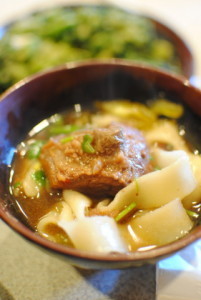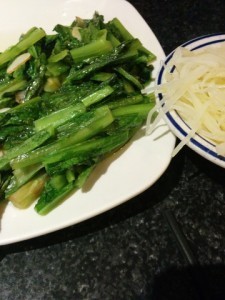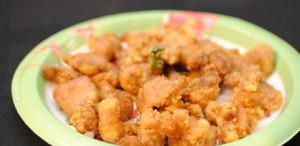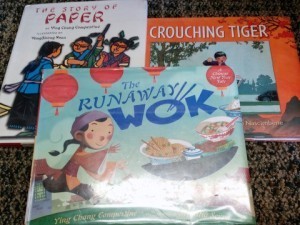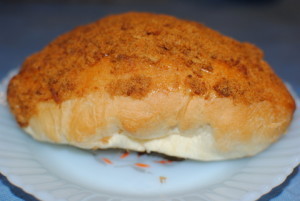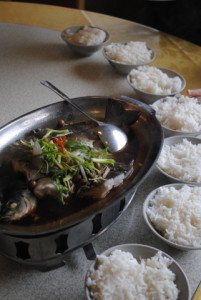Jennifer J. Chow's Blog, page 65
March 3, 2014
The Persistence of Ang Lee
“A swallow cannot know the lofty ambitions of an eagle.” -Chinese proverb

Soaring!
I have a friend who has an Oscars party every year. I don’t hold any celebrations, but I’m in awe of those in the movie magic industry. There’s something enchanting about stories brought to life through the immediacy of the visual realm.
When I think about Oscars, my mind focuses on Ang Lee. The Taiwanese director is one of only seven living directors who have won the Directors Guild of America Award more than once. Most recently, he’s been the Academy Award winner for Best Director for Life of Pi, the only recipient ever of that category who’s not Caucasian.
Ang Lee soars like an eagle now, but it wasn’t always that way. Here are some amazing facts about him:
Directed his first feature film at 38
Endured six years of unemployment after receiving his MFA in Film Production from New York University’s Tisch School of the Arts
Considered switching to the computer science field during his initial difficulty with filmmaking
Stayed at home until 1990 (his wife, a molecular biologist, supported the family during that time)
This is a wonderful, humble man who placed his kids in public school and ate at In-N-Out after his Oscar win. Additionally, Lee deliberately shot 80% of Life of Pi in Taiwan to give back to his native land.
May his story inspire those everywhere who are interested in a creative pursuit.
February 28, 2014
Foodie Friday: Beef Noodle Soup
Beef noodle soup: hot soup with stewed beef, noodles, and vegetables
I’m watching the rain splatter my windowpane, and I can feel the chill creeping in through the walls. It doesn’t rain very much in Southern California (cue the Albert Hammond’s song). When it does, though, I hanker after a hot dish. What’s better on a rainy day than soup? You can find an award-winning recipe of beef noodle soup here.
Beef noodle soup is filled with tender stewed pieces of meat. The Chinese words niúròu miàn (Mandarin pronunciation) literally mean “beef noodles.” The beef is simmered in the broth for many hours, creating an intense hearty flavor. The noodles themselves can range from skinny to thicker versions. Vegetables are added in, but act like more of a garnish to the main beef attraction.The dish can be made with a spicy hot flavor or with a subtler, sweeter taste.
What food do you eat when it rains?
February 24, 2014
Discover Taiwan, The Beautiful Island
“Beware the person with a Buddha’s mouth and a snake’s heart.” -Chinese proverb
It was with stealth that the 228 Massacre struck Taiwan, ushering in decades of sorrow. The three numbers together, 2-2-8, now hold horrific memories for many Taiwanese. The importance of this date and the ensuing dark time period can be found in my article, “228 In Today’s World.” What is so significant about the massacre and the White Terror era is its destruction of the minds of a beautiful country.
There’s a handwritten poem in my home, its first line roughly translating to “Taiwan is the best!” As the anniversary of 2/28/47 looms near, here is my homage to lovely Taiwan, which can be noted for its wonderful:
Food Taiwan, due to its unique history of various cultures, offers an interesting array of dishes. For example, there is dan tat (egg tart) but with a Portuguese flair or xiao long bao (soup dumplings) but with thinner skin. Other foods are strictly native dishes, like the oyster omelette (a gooey egg mixture with small oysters) or ba wan (disc-shaped “meat sphere” with special rice flour/yam starch/corn starch wrapper).
Land Taiwan offers a vast array of scenery. There are mountains to scale, oceans to wade in, and tiny islands to explore. I love the interplay of urban bustle with quiet, remote spots (e.g. Hualien). It’s so hard to do justice to the land, so here is a picture collage for you to make your own observations:

People There are the native peoples of Taiwan, aboriginal tribes with interesting festivals and music. Thankfully, some of their culture is officially preserved in special areas of the island. Then there are the Taiwanese leaders, who’ve created a strong economy in the land. Innovative Taiwanese minds have thought up such amazing inventions as the Razor scooter, BeRobot (the smallest humanoid robot according to Guinness World Records), and biodegradable lunch boxes.
Thank you, Taiwan, for letting me experience your abundance of goodness. Best wishes for your future!
February 21, 2014
Foodie Friday: A-Choy
A-Choy: Taiwanese lettuce
Anything with an “A” in its name is my kind of food. This vegetable is native to Southern Taiwan. A-Choy boasts very crisp stalks and tender leaves. Typically stir-fried, you can taste its freshness in every bite.
It’s becoming one of my favorite new vegetables, especially when I get tired of staples like bok choy and gailan. A-Choy is supposed to be easy to plant and fast-growing, too. So plant some or grab a couple of stalks at the grocery store. Mix the vegetable with a few cloves of garlic and soy sauce in an oiled wok, and you’re good to go!
Discover any tasty vegetables recently?
February 17, 2014
Multilingual Households: A Dilemma
“One foot cannot stand on two boats.” -Chinese proverb

Sun Moon Lake, Taiwan
I grew up in a bilingual household. My parents made it a priority to teach me English first because my older sibling had difficulty adjusting to school. For a while, I used my own shortcut language, and I would pick the quicker version (think: less syllables) of the languages I knew to speak with others. I often got odd looks for my efforts.
I know that “One foot cannot stand on two boats,” but I think language is a large part of retaining and respecting cultures. Here’s the quandary in my household: I speak Cantonese; my husband speaks Taiwanese; we both semi-speak Spanish; and the kids go to Chinese school (Mandarin). How can we maintain it all, and make sure we communicate well in the process?
Here are some methods that I’ve witnessed:
Parent A focuses on one language; Parent B uses the other language
Immersion school (institutions taught exclusively in one language)
Alternating days of the week (Monday=German, Tuesday=English, etc.)
International travel (kids get dropped off for a chunk of time, say the summer, in a different country)
Films (learning via media–cartoons, movies, etc.)
Any thoughts, advice, or experiences on how to keep languages flowing?
February 14, 2014
Foodie Friday: Popcorn Chicken
Popcorn chicken: battered pieces of chicken, with Asian spices
Looking for something to share with your sweetheart? Delight your tastebuds with some bite-sized, crunchy goodness. Typically sold at vendor stalls in Asia, this is not your typical KFC chicken. The recipe uses a simple mix of flavorful additions, including Chinese five-spice powder. Sometimes basil is sprinkled over the dish for a delish garnish.
If you’re not interested in making these at home, you can drop by your local Chinese restaurant or Taiwanese teashop to scout for some. It even comes with skewers for people to pick and claim their individual pieces. But you can throw away those sticks because you’re with your valentine, right?
February 10, 2014
Modern Multicultural Books for Kids
“You cannot help shoots grow by pulling them up.” -Chinese proverb
Not just sprouting plants but young kids’ hearts are very tender. I remember my teacher reading Tikki Tikki Tembo in class. Afterward, all the kids looked my way and tried their own nonsense version of Chinese to talk to me. On the school bus, peers would make slanted eyes at me, sometimes adding, “Konnichiwa.” Nobody ever teased me more than that, but maybe they were intimidated by my possible Bruce Lee kung fu skills.
I’m glad that modern multicultural children’s books have moved beyond that classic. Now, actual ethnic authors are writing authentic tales. Some of my favorite stories are:
Bee-Bim Bop!; a rhyming picture book about the traditional Korean dish, with a recipe at the end.
Crouching Tiger; a complex picture book about a boy respecting his grandfather through tai chi, along with a brief history of martial arts
1001 Cranes; a middle-grade tale about a girl discovering her culture and connecting to her family through making origami displays
What’s your favorite multicultural book for kids?
February 7, 2014
Foodie Friday: Pork Sung Bun
Pork sung bun: bread that’s coated with a layer of shredded, dry pork
Pork sung is known by names like “meat wool” or “meat floss.” It comes in distinctive fibers, like cotton candy for meat lovers. The pork melts in your mouth, providing an addictive salty/meaty taste. (There are also other varieties which use fish or beef.) Pork sung is made by stewing pork in a soy sauce mixture and then pulling apart the meat strands. Later, it is dried by heating in an oven and frying over a large wok.
Asian stores will sell them in small round containers or massive jars. Often, it’s used as a topping on things like tofu or soy milk. I actually didn’t eat too much while growing up, but later on in life, I discovered one of my favorite ways to eat it: pork sung sprinkled on top of congee. It really adds flavor to rice porridge.
One recent twist I tried is the pork sung bun. Although it looked pretty tasty, I have to give the bun a thumbs down. The simple recipe uses fresh baked bread, a thin layer of mayo, and pork sung on top. I’m not really a big fan of mayo, so next time, I’ll just have my pork sung plain.
February 3, 2014
Does Age Make a Difference in Relationships?
“Rats know the way of rats.” -Chinese proverb
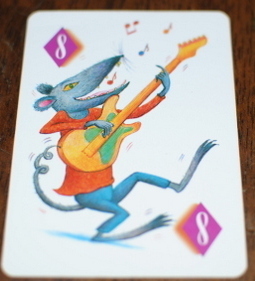
From the Rat-A-Tat-Cat card game
Gung hay fat choy! 2014 is the Year of the Horse. Twelve animals make up the Chinese zodiac: rat, ox, tiger, rabbit, dragon, snake, horse, sheep, monkey, rooster, dog, and pig. Each exhibits a different personality based on your birth year. As a kid, I remember seeing the zodiac printed on paper placemats in Chinese restaurants (our family establishment had ones with red curlicue borders). Besides the character traits, there’s usually a line about which other animals you would be compatible with.
There seems to be a pattern to this calculation: four year differences provide the best relationships. I’m not sure why. In fact, I would have thought the same age would work better with couples since people of the same cohort connect well because of similar experiences.
My parents will soon be celebrating their multi-decade anniversary (congratulations!), and they’re the same age. However, I have also seen almost decade gaps work really well. What do you think? Is there an age factor to compatibility?
January 31, 2014
Foodie Friday: Steamed Fish
Steamed fish: whole fish in a soy sauce broth, garnished with ginger and scallions
Happy Chinese New Year! One of the best dishes served during this festive time is steamed whole fish. It’s a symbol of prosperity because the characters for “fish” and “surplus” sound very similar. The fish must be served whole, which signifies a lucky year, from start to end. I love this simple dish because it’s quick and tasty while using minimal ingredients.
Growing up, I heard that you should never flip over a fish to get to the meat on its underside. This superstition stems from fishermen, who believed that turning over the fish would lead to their boat capsizing. As a result, I’ve seen some very deft chopsticks debone a fish in almost artistic maneuvers.
My favorite part of the fish (at least as a child)? The eyeballs. Yep, those round spheres are delicacies. We used to squabble over them as kids to see who would get the first pick. I remember associating them with pearls, both in their shape and value.
What interesting food traditions or eating preferences do you have?

